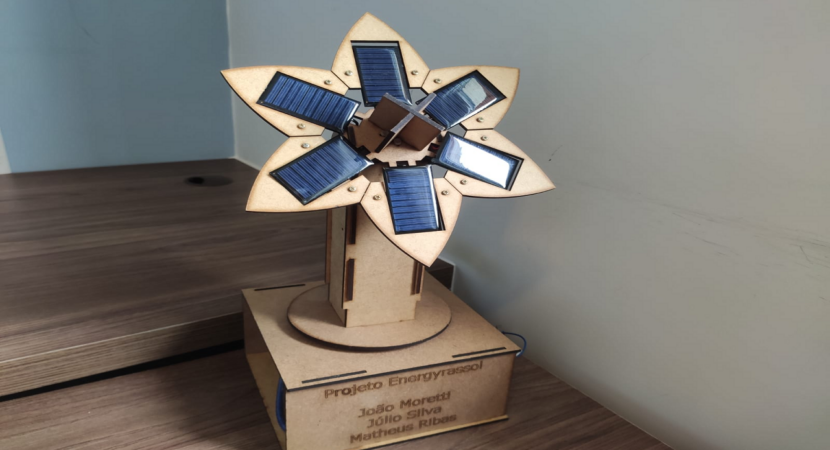
The prototype with photovoltaic panels inspired by the shape of sunflowers has great power and, according to Etec students, can be inserted on a larger scale, despite the high maintenance cost
Students at the Bento Quirino State Technical School (Etec) in Campinas sought inspiration from nature to improve their scientific project: the development of photovoltaic panels moved through an electronic system based on sunflowers. Student João Pedro, a representative of the team, explained that the idea was born when they were studying a subject on Energy Efficiency and thought about whether it would be possible to work on a theme that involved sustainability. According to João, after several studies on clean energy generation, the team realized that solar energy provided the greatest potential for electricity generation.
Read other related news
Etec Campinas creates 'Energyrassol'
The Etec students' project was named 'Energyrassol', whose main objective is to show that mobile photovoltaic solar energy panels have the ability to capture much more light and ensure that energy generation is greater. The group of Etec students was classified for the 20th edition of Febrace (Brazilian Science and Engineering Fair).
Friends João Pedro Vieira Moretti, Júlio Cézar Silva de Macedo Mota, Matheus Eduardo Ribas da Silva, from the third year of Technical High School, from the Electronics course, are part of the team that developed the Energyrassol project. In the project, they used concepts from Biomimicry, the science that seeks solutions and fundamentals existing in nature, which serve to improve technologies and provide a basis for projects.
Student João Pedro, a representative of the team, explained that the idea was born when they were studying a subject on Energy Efficiency and thought about whether it would be possible to work on a theme that involved sustainability. According to João, after several studies on clean energy generation, the team realized that solar energy provided the greatest potential for electricity generation.
However, the luminous variation throughout the day made the energy supply limited. With that, the team decided to look for solutions and ended up being inspired by sunflowers when creating a flower-like mechanism. According to João Pedro, the sunflower-shaped mechanism will serve to improve the efficiency of the electricity generation system through photovoltaic panels.
Tests carried out by the Etec team
Through simulators available on the internet and several mathematical calculations to verify approximate values of the real ones so that it was possible to develop the work, several tests were carried out in the project.
According to the Etec team, developing a real prototype will be better for studying and improving the mechanics of Energyrassol. The students' research showed an improvement of around 20 to 30% in the uptake of mobile photovoltaic panels, compared to a static panel project.
João Pedro points out that even if the tests show that the mobile prototype based on sunflowers is very efficient in generating energy, unfortunately it has a higher cost, precisely because it requires constant maintenance on the equipment.
Other attributions of the Energyrassol project
The Etec team also highlighted that the main part of the work was the proof that mobile photovoltaic panels show a considerable improvement in the average power captured per day.
According to the team's studies, at the beginning, the structure was not designed for implementation in industry, residence or rural areas. However, the implantation of the prototype is totally feasible, being made a structural reformulation in the project, aiming the implantation of the same in larger scales. The team intends to close the tests and then complete the studies and be able to exhibit at the 20th Febrace, which will take place between the 14th and 25th of March this year.











